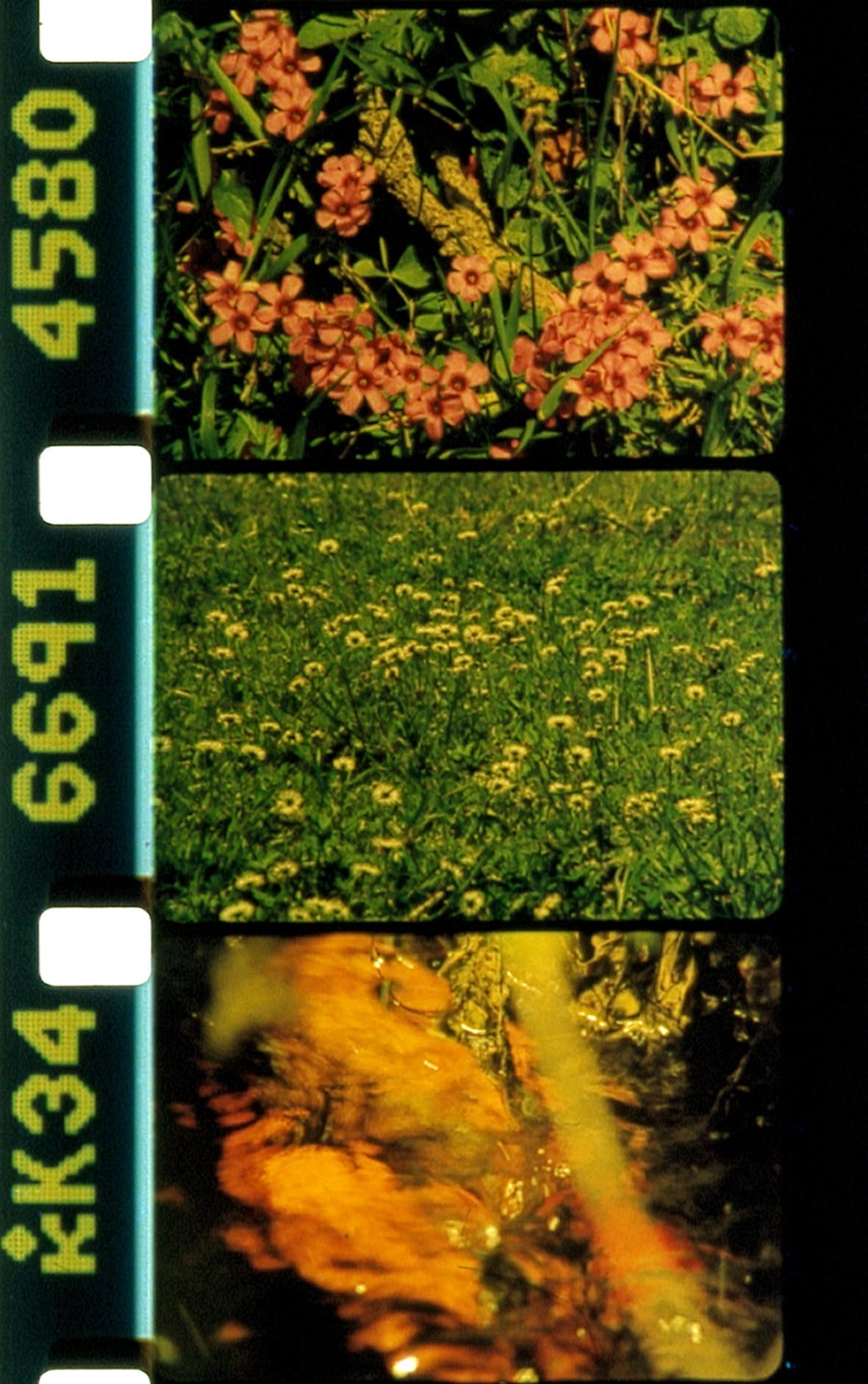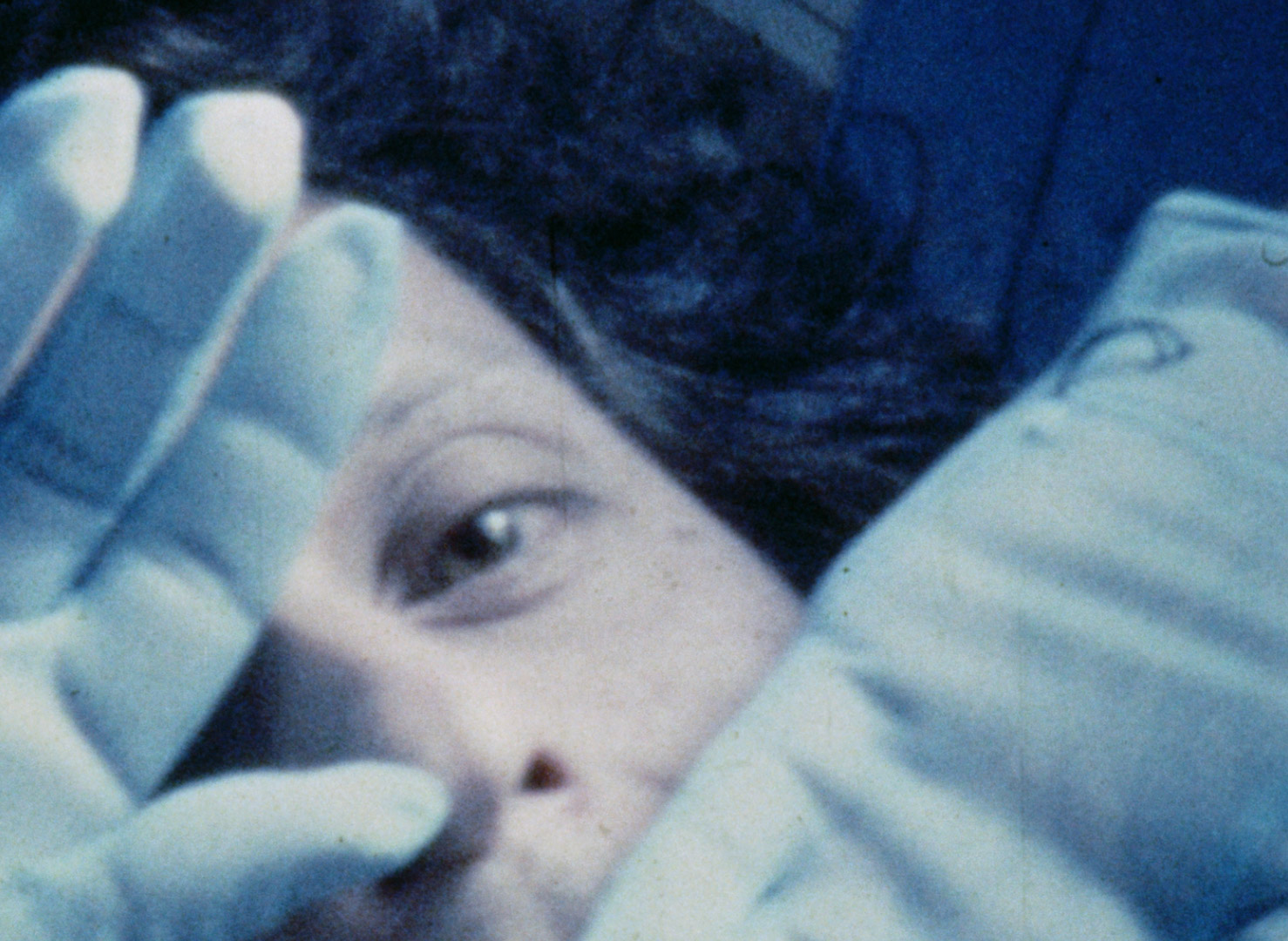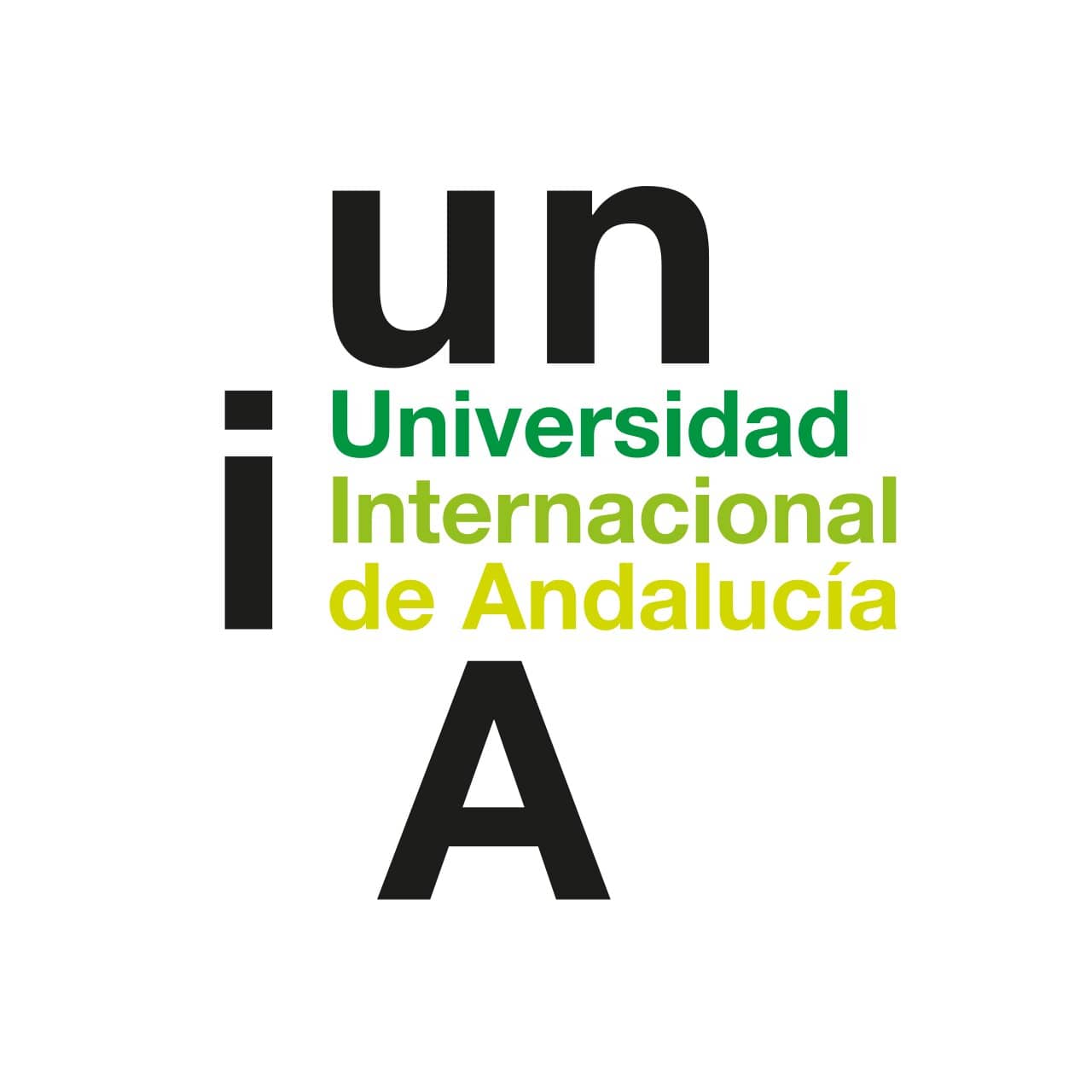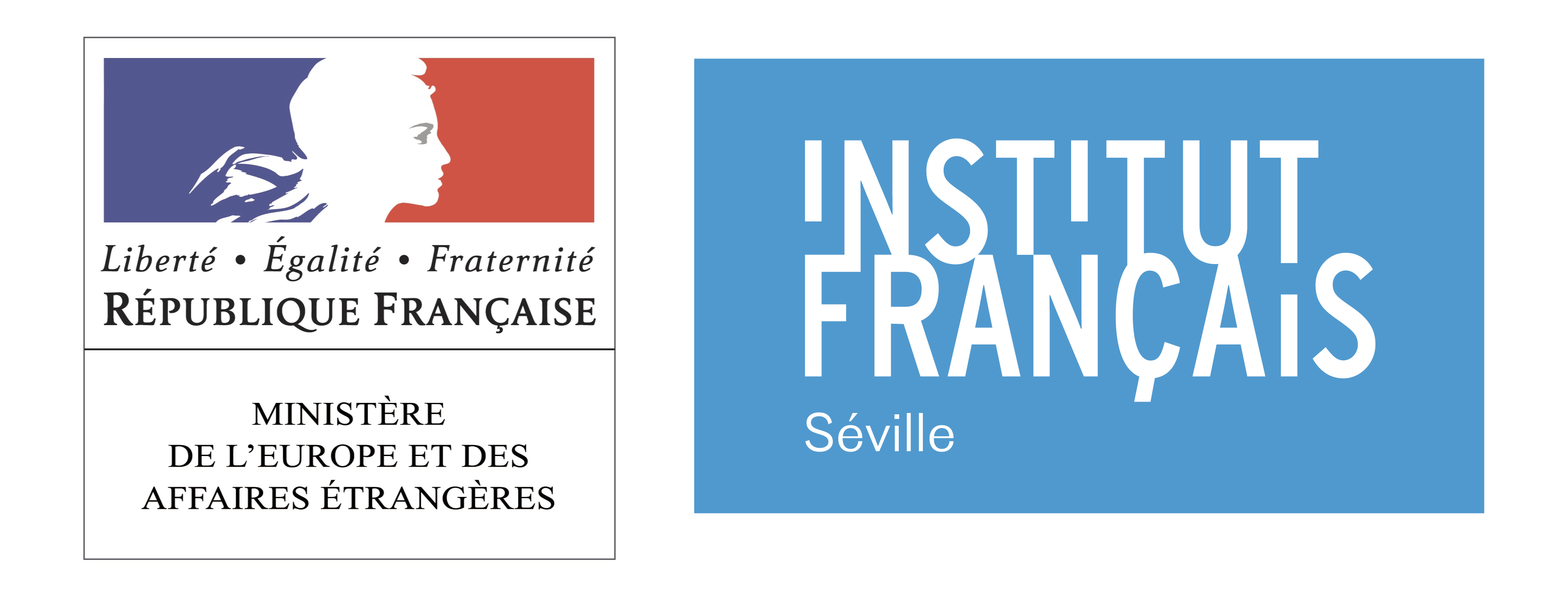SEMINAR 40 YEARS OF LIGHT CONE: ACTIVATING CINEMA
- Date: November 9 to 12
- Place: CAAC - Centro Andaluz de Arte Contemporáneo (Training sessions with Yann Beauvais) | MK2 Cinesur Nervión Plaza (Screenings)
- Price: 12€ | University and student discount 10€.
- Registration deadline: Del 11 de octubre al 2 de noviembre de 2021
Seminar given by Yann Beauvais; Filmmaker, independent curator, critic, co-founder of the distribution company Light Cone and programmer of Scratch.
>> INSCRIPTION
CALENDAR
- Seminar given by Yann Beauvais: November 9 and 10. From 11: 00-14: 00 at the CAAC..
- Screenings: From November 9 to 12. Afternoon. MK2 Cinesur Nervión Plaza.
2022 marks the 40th anniversary of the organisation responsible for bringing experimental cinema, in its original formats, to every corner of Europe: Light Cone, which houses 5,000 films from 1900 to the present day from all over the world at its headquarters in Paris (a veritable crypt of treasures). In this edition of the Festival, Yann Beauvais, who founded Light Cone with Miles McKane in 1982 and is one of the world's leading experts and exponents on the subject, brings us a selection from this inexhaustible collection, which also outlines a new history of avant-garde cinema. Under the title "Activating cinema", Beauvais rediscovers the revolutionary, inspiring and exciting potential of this suggestive vein of cinema through a vision that renews the canons based on a view that includes both ecology and gender identity, whilst not neglecting themes such as cinema in its materiality and its relationship with the fine arts. The crème de la crème, in a series of unique sessions in which 16mm and super 8 projectors will once again roar in the theatre.
PARTE 1: SESIONES CINEMATOGRÁFICAS

SESSION 1 - LANDSCAPE/ECOLOGY
This first session looks at the relationship between experimental cinema and the long European pictorial tradition, in a series of films that explore this theme from various angles. One of these is the reinterpretation of pictorial motifs (for example, through Welsby's "marina", the studies of film pioneer Germaine Dulac, Inger Lise Hansen's broad plains, Esther Urlus's allusion to Mondrian, or the animal representations of Georges Rey and Werner Nekes). Another is the use of the plastic qualities of film and landscape as a vehicle for formal invention: we see this in Kurt Kren's trees, Martine Rousset's windows, Helmut Nickels's "fast landscape", Jean Michel Bouhours's joyful animations and the frame-by-frame "bouquets" of Rose Lowder (a filmmaker whose open environmentalism is expressed here). There is also room for Louise Crawford's reflection on the urban landscape, or Pascal Auger's invasion of the city into the peaceful coastal setting, and for Lisl Ponger's relationship between the landscape and the tourist invasion of it, elaborated with found footage.
SANS TITRE (Helmut Nickels, 1976-1977, 16mm, 5 min.), HUS (Inger Lise Hansen, 1998, 16mm, 8 min.), PUT-PUTT (Werner Nekes, 1967, 16mm, 10 min.), 3/60 BÄUME IM HERBST (Kurt Kren, 16mm, 1960, 5 min.), COLOUR SEPARATION (Chris Welsby, 1974-1976, 16mm, 3 min.), ÉTUDE CINÉGRAPHIQUE SUR UNE ARABESQUE (Germaine Dulac, 1929, 16mm, 7 min.), FESTUNG EUROPA (Louise Crawford, 1992, 16mm, 7 min.), LA VACHE QUI RUMINE (Georges Rey, 1969, 16mm, 3 min.), RODE MOLEN (Esther Urlus, 2013, 16mm, 5 min.), JUSTE AVANT MIDI (Pascal Auger, 1986, 16mm, 7 min.), PASSAGEN (Lisl Ponger, 1996, 16mm, 12 min.), VAGUES À COLLIOURE (Jean Michel Bouhours, 1991, 16mm, 6 min.), LES HEURES (Martine Rousset, 1990, 16mm, 6 min.), BOUQUETS 25-27 (Rose Lowder, 2002-2003, 16mm, 4 min.)

SESSION 2. GENDER/IDENTITY
Opening up the debate around identity and gender should be highlighted in relation to the social changes of the last few years. In the light of these facts, it is necessary to review the Light Cone collection in search for a possible genealogy of films that make this diversity visible. In this session, then, we find films that get to the heart of feminism: through Valie EXPORT's and Mara Mattuschka's straightforward and uncompromising expressions of women's sexuality, Sarah Pucill's and Matthias Müller's revisions of the impostures of femininity, and Vivian Ostrovsky, Marcelle Thirache and Jennifer Burford's expressions of power and sisterhood. The visibility of LGTBIQ+ communities found a niche early on within experimental cinema, as we see in the works of Michel Nedjar, Jakobois and Hans Scheugl. We also find a space here for the radical and theatrical vision of Klonaris and Thomadaki, seeking their own place in the collective imaginary, as well as for the rejection of binary gender expressions expressed by Christine Noll Brinckmann as early as 1980.
VULVA (Marcelle Thirache, 1993, super 8, 7 min.), VERS LA DAME JOUANNE (Jennifer Burford, 1993, super 8, 5 min.), DRESS REHEARSAL / KAROLA 2 (Christine Noll Brinckmann, 1979-1980, 16mm, 14 min.), HOME STORIES (Matthias Muller, 1991, 6 min.), DANKE, ES HAT MICH SEHR GEFREUT (Mara Mattuschka, 1987, 2 min.), LE GANT DE L’AUTRE (Michel Nedjar, 1977, super 8, 15 min.), FLASH PASSION (Maria Klonaris & Katherina Thomadaki, 1970, super 8, 2 min.), PASSAGE DU DESIR (Jakobois, 1988, 16mm, 9 min.), MANN & FRAU & ANIMAL (Valie EXPORT, 1970-1973, 16mm 10 min.), PRINCE OF PEACE (Hans Scheugl, 1993, 16mm, 8 min.), BACKCOMB (Sarah Pucill, 1995, 16mm, 6 min.), ALLERS VENUES (Vivian Ostrovsky, 1984, 16mm, 12 min.)

SESSION 3. CINEMA AS MATERIAL
In this session we will revisit one of Europe's most valuable contributions to art-house cinema: thinking about the very material qualities of film. Here we will see an ensemble of films (pure visual delight) that play with the material of cinema itself. For example, through direct action on the celluloid strip: this is the case of the incredible collages of Cécile Fontaine, Vanda Carter and Frédérique Devaux, the near-sculpted films of Giovanni Martedi and the plastic use of the deterioration of film by Jurgen Reble. Other films are based on photochemical processes, as suggested by the study of light by Bauhaus master Laszlo Moholy-Nagy, and the copy and film experiments of Paolo Gioli, Patrice Kirchoeffer and Françoise Thomas. Experimentation with the film's optical soundtrack (by Guy Sherwin), and Pierre Rovere's nod to Fischinger's visual music in one of the first films to be made with the intervention of a computer.
MUSICAL STAIRS (Guy Sherwin, 1977, 16mm, 10 min.), K (BERBÈRES) K (BERBERIANS) (Frédérique Devaux, 2007, 6 min.), DEL TUFFARSI E DELL’ANNEGARSI (Paolo Gioli, 1972, 16mm, 11 min.), LICHTSPIEL SCHWARZ-WEISS-GRAU (Laszlo Moholy-Nagy, 1930, 16mm, 6 min.), MOTHFIGHT (Vanda Carter, 1985, 8 min.), BLACK AND LIGHT (Pierre Rovere, 1974, 16mm, 8 min.), FILM SANS CAMÉRA STST (Giovanni Martedi, 1975, 6 min.), CHROMATICITÉ II (Patrice Kirchoeffer, 1978, 16mm, 6 min.), SYSTEMA (Françoise Thomas, 1984, 16mm, 6 min.), CRUISES (Cécile Fontaine, 1989, 16mm, 8 min.), ZILLERTAL (Jurgen Reble, 1991, 16mm, 11 min.)

SESIÓN 4 - THE LIGHT CONE YEARS: THE CINEMA OF YANN BEAUVAIS
Yann Beauvais has been involved in cinema in a variety of ways since the mid-1970s. In addition to his work as a researcher, writer, teacher and cultural activist, and his time at the helm of Light Cone, Beauvais holds a long and prolific career as a filmmaker. His films are distinguished by their combination of a rigorous formal approach with an unflinching political vision. In this sense, his cinema has gone through several stages: from the diaristic visions inherited from Mekas, also imbued with a profound sense of the plasticity of cinema, to his collagist animations and his ciné-tracts, a name he uses in homage to the Cinétracts, those "cine-pamphlets" filmed anonymously by filmmakers like Marker and Godard as a way of taking direct and revolutionary action in May of ' 68.
For this session we bring together a selection that focuses on films produced during his years as a leading figure in Light Cone, composing a diverse sample of these aforementioned tendencies.
DISJET (Yann Beauvais, 1979-1982, 16mm, 40 min.), ENJEUX (Yann Beauvais, 1984, 16mm, 6 min.), DIVERS-ÉPARS (Yann Beauvais, 1987, 16mm, 12 min.), QUATRE UN (Yann Beauvais, 1975-1991, 16mm, 15 min.), STILL LIFE (Yann Beauvais, 1997, vídeo, 12 min.)
PART 2: SEMINARY BY YANN BEAUVAIS
ACTIVATE THE CINEMA FROM THE MARGINS. A POSSIBLE INTRODUCTION TO EXPERIMENTAL CINEMA
Session 1. The Beginnings November 9th. 11:00 h. - 14:00 h. at the CAAC
In this first session Beauvais will deal with the first two explosions of experimental cinema in the 20th century: the avant-garde of the 1920s and the explosion of the 1960s. Throughout this session, we will learn about the origins of the artistic use of film, examining the work of a series of filmmakers who knew how to exploit the qualities of a new medium yet to be explored, before the consolidation of the language and hegemony of narrative cinema. After the fracture caused by the Second World War, in the heat of the countercultural movements of the 1960s, cinema gained new strength as an expressive tool, and also as a vehicle for a new way of understanding the world. In this first part of the history of European experimental cinema, the focus will be on essential and until recently invisible figures, such as the queer and feminist filmmaker of the 1920s Germaine Dulac, and on the groundbreaking work of women filmmakers such as Valie EXPORT, Birgit Hein and Gunvor Nelson, among others.
Session 2. The Explosion of Diversity November 10th. 11:00 h. - 1 4:00 h. at the CAAC
In this second session Beauvais will talk about the multiplication of voices and concerns that took place in the world of experimental cinema from the late 1970s onwards, with special emphasis on the effervescent community that gathered around Light Cone in the 1980s and 1990s. It will also delve into some of the thematic lines that run through the programmes: environmentalism, identity and gender.
IN COLLABORATION WITH





